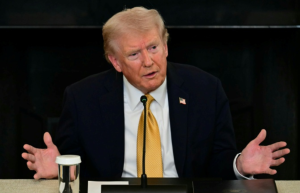Just as the news of a record number of foreign student enrolments in the U.S. colleges and universities was making the headlines, another estimate reveals that international students and their families contributed more than $21.8 billion to the U.S. economy during the 2011-2012 academic year.
California, New York, and Texas welcomed the largest numbers of international students, and those and other states across the country saw substantial benefits from spending by these students and their families on living expenses, tuition, and fees, reveals a new NAFSA report.
"International students bring important economic benefits to the United States. They bring incalculable academic value to U.S. colleges and universities and cultural value to local communities as international enrolments grow," said NAFSA Executive Director and CEO Marlene M. Johnson.
California had 102,789 foreign Students enrolled in the 2011-2012 academic year who made a net contribution of $3,214,574,000 to the state economy. Contribution from students alone is estimated to be $4,139,707,000 including $1,897,716,000 from tuition/course fees and $2,241,991,000 from living expenses. Living expenses from dependents of the students amounted for $58,017,000 during the year.
There were 82,436 international students admitted in universities and colleges in the state of New York. The net contribution from the students is estimated to be about $2,584,939,000 including tuition/course frees o $1,930,380,000 and living expenses of $1,723,729,000. Living expenses of the dependents amounted for $51,106,000.
61,511 foreign students enrolled to Texas educational institutes in 2011-2012 academic year contributing a net contribution of $1,355,538,000, including $1,840,185,000 from students and $26,193,000 from their dependents.
The numbers shows an increasing interest in the global student community to pursue their education in the United States, especially from China and the gulf countries. While China continues to be the biggest exporter of students to the U.S. (157,558 students), there was a 50 percent jump in the number of students coming to U.S. from Saudi Arabia, which send 34,139 students for higher education. "There is much more we can do as a nation to promote student exchange and study abroad and this data clearly points to the potential future benefit of a cohesive and proactive international education strategy for our nation," Johnson said.
© 2025 HNGN, All rights reserved. Do not reproduce without permission.








